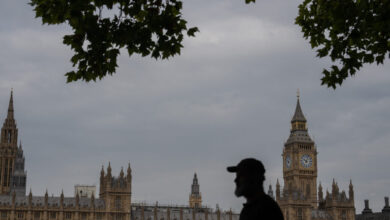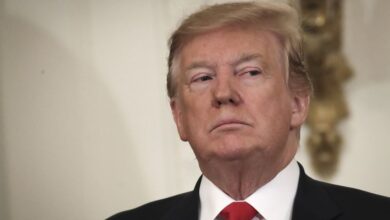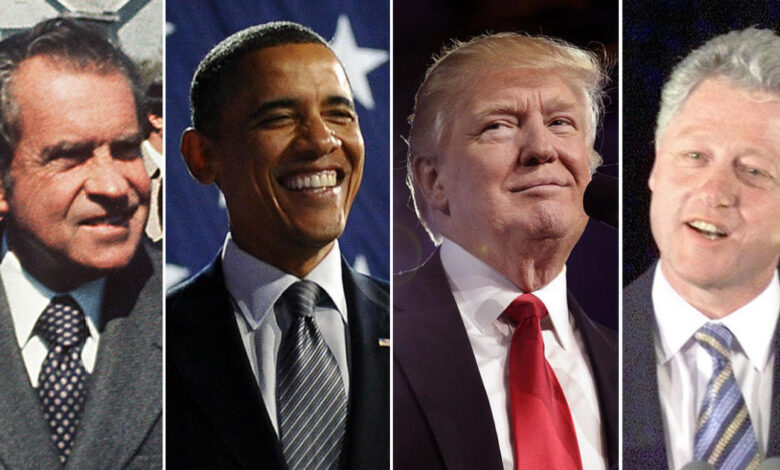
The Disgrace of a Former American President
The disgrace of a former American president is a complex and multifaceted issue, one that continues to reverberate through American politics and society. It’s a story of alleged actions, legal battles, shifting public opinion, and a profound impact on the nation’s trust in its leadership. This isn’t just about the individual; it’s about the erosion of ideals and the lasting consequences for the office of the presidency itself.
We’ll delve into the specific allegations, explore the legal and ethical ramifications, and examine how media coverage and public perception shaped the narrative.
This exploration goes beyond simply recounting events; it aims to understand the deeper implications of these actions, examining their historical context and comparing them to similar situations faced by previous presidents. We’ll look at how the legal and ethical standards applied to former presidents differ from those applied to sitting presidents, and how the enduring impact continues to shape American political culture and public discourse.
Historical Context and Precedents
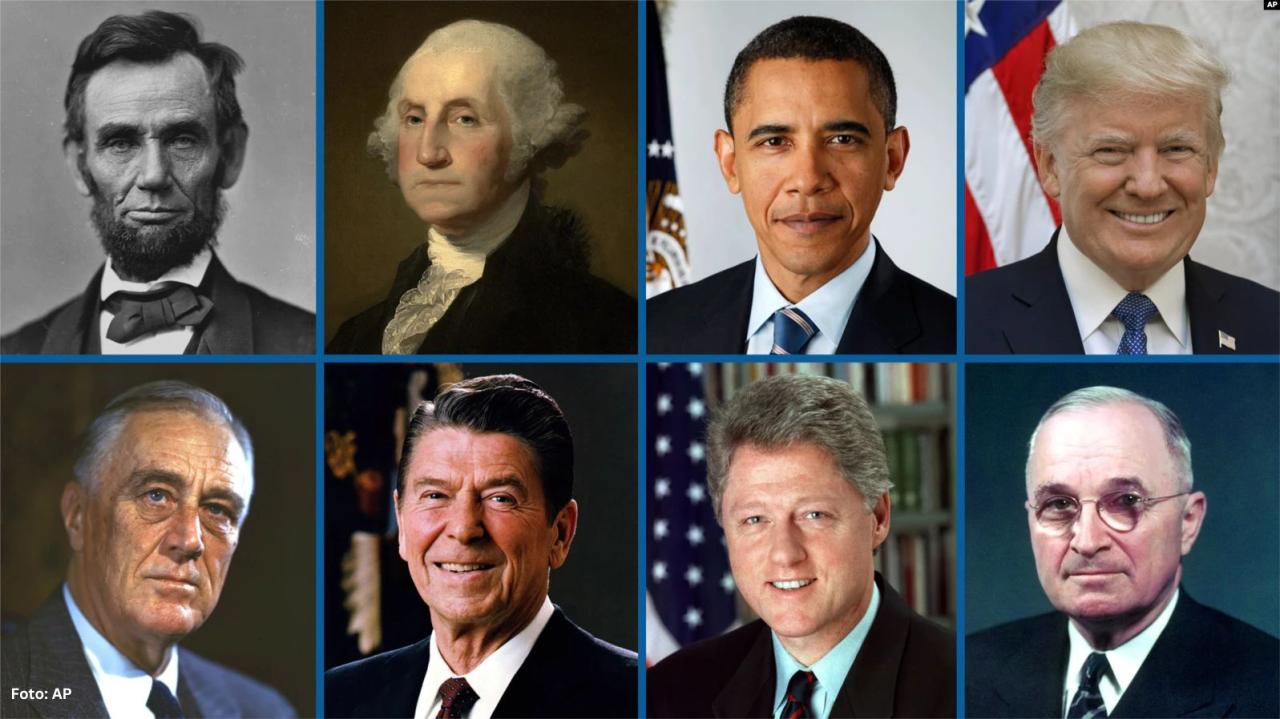
Assessing the disgrace of a former American president requires understanding its place within a long and complex history of presidential scandals and controversies. While the specific details of each case differ, examining similar situations reveals recurring patterns and helps contextualize the current events. This historical lens allows for a more nuanced understanding, moving beyond immediate reactions and offering a perspective informed by past experiences.The weight of accusations against a president is profoundly shaped by the prevailing political climate and societal values.
What might be considered a minor transgression in one era could be seen as a major scandal in another. Similarly, the media landscape and its influence on public opinion significantly impact how these events unfold and are ultimately remembered.
Presidential Scandals and Their Outcomes
Several past presidents faced accusations that, while varying in nature, share similarities with the current situation. Richard Nixon’s Watergate scandal, for instance, involved abuse of power, obstruction of justice, and a cover-up. This led to his resignation, a dramatic and unprecedented event in American history. The scandal profoundly shook public trust in government and led to significant reforms aimed at increasing transparency and accountability.
In contrast, Bill Clinton’s impeachment proceedings, stemming from accusations of perjury and obstruction of justice related to a personal affair, resulted in acquittal by the Senate. While Clinton faced political fallout, he completed his second term in office. These contrasting outcomes highlight the complexities involved in judging presidential misconduct and the influence of political factors on the final judgment.
The Influence of Historical Context on Interpretation
The historical context surrounding presidential scandals heavily influences public perception and the ultimate consequences. The social and political climate of the time, including prevailing moral standards, media coverage, and partisan divisions, all play a crucial role. For example, the Watergate scandal occurred during a period of intense social and political upheaval, making the public particularly sensitive to abuses of power.
In contrast, the Clinton impeachment happened during a time of relative economic prosperity and political stability, potentially contributing to a more divided public response. Understanding these contextual factors is essential for a complete and accurate assessment of the current situation. The specific nature of the accusations, the evidence presented, and the legal and political processes involved all interact with the historical context to shape public understanding and the ultimate outcome.
Long-Term Consequences: The Disgrace Of A Former American President
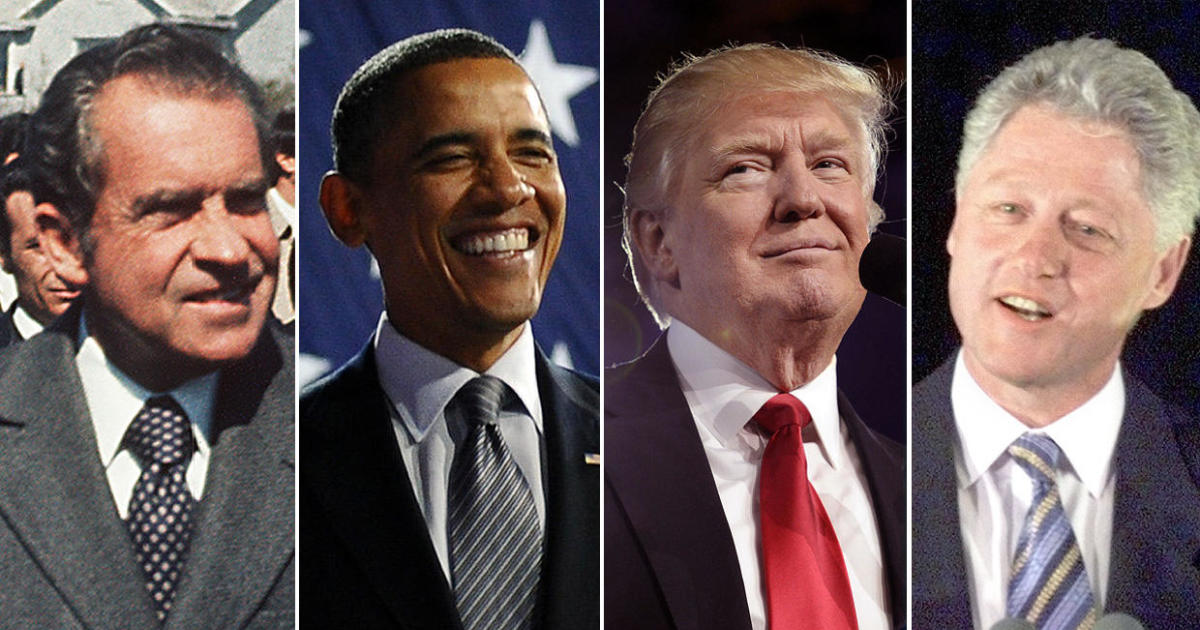
The disgrace of a former American president casts a long shadow, impacting not only the individual but the very fabric of the nation’s political landscape and societal norms. The ramifications extend far beyond the immediate aftermath, potentially reshaping the presidency itself and altering the relationship between citizens and their government for years to come. Understanding these long-term consequences requires careful consideration of the institution’s vulnerabilities and the evolving nature of American political culture.The erosion of public trust is perhaps the most significant and pervasive consequence.
This event, depending on its nature and the public’s perception, can profoundly damage faith in the integrity and effectiveness of the executive branch. This loss of trust isn’t simply a matter of opinion; it can lead to decreased civic engagement, voter apathy, and a growing cynicism towards political processes. The resulting political polarization can further exacerbate societal divisions, making constructive dialogue and compromise increasingly difficult.
Impact on the Presidency, The disgrace of a former american president
The institution of the presidency itself faces potential long-term consequences. A significant scandal involving a former president can lead to increased scrutiny and reform efforts aimed at preventing similar occurrences in the future. This could involve stricter ethical guidelines, enhanced transparency measures, and perhaps even changes to the impeachment process. Furthermore, the event may alter the dynamics of presidential power, influencing future presidents’ decision-making and interactions with other branches of government.
The precedent set by the handling of the disgrace could shape future responses to similar situations, impacting the balance of power within the government. For example, a weak response might embolden future misconduct, while an overly aggressive response might lead to accusations of overreach.
Impact on American Political Culture and Public Trust
The event’s impact on American political culture is multifaceted. It can lead to increased polarization, with opposing sides entrenched in their views and unwilling to compromise. The spread of misinformation and the weaponization of social media can further exacerbate this polarization, making it difficult to discern fact from fiction. This erosion of trust extends beyond the presidency to encompass other institutions of government, potentially leading to a decline in civic participation and a sense of disillusionment with the democratic process.
We might see a rise in populist movements, fueled by distrust in established institutions and a desire for radical change. The 2016 election, for example, demonstrated how deep-seated distrust in the political establishment could fuel a successful populist campaign.
Illustrative Depiction of Lasting Impact
Imagine a fractured nation, depicted as a mosaic with many pieces, some vibrant and others cracked and broken. The vibrant pieces represent the enduring strengths of American democracy – its resilience, its capacity for innovation, and its commitment to fundamental values. The cracked and broken pieces represent the divisions caused by the event, the erosion of trust in institutions, and the challenges in maintaining a cohesive society.
The image is not static; some pieces are slowly being repaired through civic engagement and dialogue, while others remain fractured, reflecting the ongoing struggle to overcome the lasting consequences. The image’s overall tone is one of cautious optimism, suggesting that while the damage is significant, the potential for healing and restoration remains. The slow, painstaking process of rebuilding trust and bridging the divides is central to this depiction.
The vibrant colors slowly begin to fill in the cracks, representing a gradual but persistent effort toward reconciliation and healing.
Ultimately, the disgrace of a former American president serves as a potent reminder of the importance of accountability and ethical conduct in public life. The events, their aftermath, and the ongoing debates highlight the fragility of public trust and the enduring power of historical precedent. The story is far from over, and its implications will continue to shape the political landscape for years to come.
It’s a cautionary tale, a study in the human fallibility of power, and a crucial examination of the American ideal versus the reality of its political leaders.
The whole Trump presidency saga felt like one long, drawn-out national embarrassment; a constant stream of scandals and questionable decisions. It’s a far cry from the quiet pursuit of ancient artifacts, like those potentially unearthed while treasure hunting on England’s Jurassic Coast. I wonder if finding a lost Roman coin would feel as impactful as uncovering the full extent of the former president’s misdeeds.
Either way, both pursuits require patience and a willingness to sift through a lot of dross.
The disgrace of a former American president, overshadowed by so many scandals, pales in comparison to the sheer scale of human suffering elsewhere. It’s hard to even comprehend the magnitude of the crisis unfolding in Sudan, as highlighted in this devastating report: anarchy in sudan has spawned the worlds worst famine in 40 years. The contrast is stark; while we debate the failings of one individual, millions face starvation.
It puts the petty squabbles of American politics into a truly horrifying perspective.
The shadow of a disgraced former American president continues to loom large, casting a pall over the political landscape. It’s a stark contrast to the energy Governor Tim Walz brought to the DNC, as seen in this report: tim walz fires up the dnc. The contrast highlights the importance of strong leadership and the ongoing need to move forward, away from the controversies of the past and towards a brighter future.




